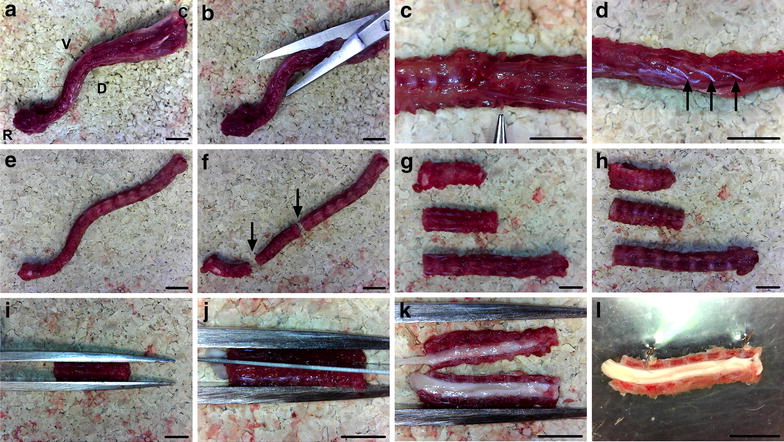Fig. 3.

Spinal cord exposure. a, b Muscle, fat, and other soft tissues are cut from the spinal column using curved scissors. c The T13 level DRG pair is found caudal to the most caudal ribs, which are used as landmarks (identified by forceps). d Spinal nerves (arrows) project from the column and can be removed. e, f Once cleared of soft tissues (e), the column can be cut (arrows) into three pieces (f), with one cut at the level of the last rib in order to orientate the dissection. g, h The column segments must be placed dorsal (g), not ventral (h), side facing up. i, j, k Thick forceps are then used to secure the spinal column dorsal side up (i), before cutting it into two equal halves along the midline (j, k). l The spinal column hemi-segments can be pinned out, medial side up, using two insect pins through intervertebral discs in Sylguard-lined petri dishes, before flooding with ice cold PBS. In all panels, the rostral end is to the left and the caudal end to the right. Scale bars 0.5 cm
